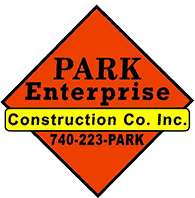
Thud-thud! “Wow, how deep was that pothole?” you ask yourself, cringing at the potentially expensive, long-term damage to your vehicle....and more importantly your asphalt lot. But what are potholes exactly, aside from a sometimes jarring experience, and how do they form?
There’s some disagreement about definitive size necessary to be considered a pothole. Generally, they’re holes in a driving surface ranging several inches to several feet across. Here’s how they happen.
Pothole Formation Can Be The Death of Your Parking Lot
Death by Water
A gentle spring rain makes the flowers grow, right? Right, but it also slowly kills your lot. Over the millennia, water’s erosive power cuts through miles of bedrock. Even the best commercial parking lots stand little chance when exposed to the elements even for several decades.
Water runoff and poor drainage on a driving surface:
- Erode the top layer
- Seap beneath the top layer and weaken sublayers
This applies to:
- Rain water
- Standing water
- Snow melt
- Ice
Freezing temps are particularly damaging. Water expands by 9% as it turns to ice, forcing cracks and holes open wider. Repeated freezing expansion and thawing contraction has a compounding effect, allowing more water to trickle beneath and erode lower layers.
With lower levels weakened and eroded away, that portion of the driving surface collapses into itself. Bam! Pothole.
Death by Weight
Vehicle weight (about 4,000 pounds for an average midsize car while the federal limit for commercial vehicles is 80,000 pounds) grounds and pounds your commercial parking lot over time.
Any manmade structure that continually withstands many tons of pressure will eventually crumble. Potholes form when the driving surface simply can no longer carry the load.
Your parking lot repair schedule can give your lot renewed strength.
Death by Poor Maintenance
An experienced asphalt paving company, however, will plan adequate layering and strong joints to help your lot accommodate volumes of traffic for longer. But like any construction job, it’ll still require upkeep.
Regularly scheduled parking lot repair jobs should include:
- Sealcoating every few years
- Frequently checking and filling new cracks and holes
- Fixing potholes before they become craters
- Weeding cracks
- Cleaning engine oil spots
- Painting fresh parking stripes
Even regularly sweeping debris can promote better water drainage and add time to the useful life of your commercial parking lot. A well-built lot should last 10-15 years, depending on use and regional climate. Common-sense parking lot repair and preventative maintenance could add another few years to that total.




